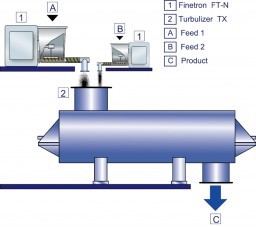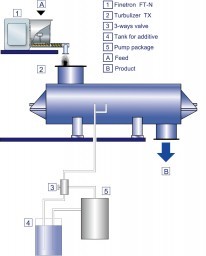- Industries & Machines Industries & Machines
- IIoT IIoT
- Service-Toll Processing Service-Toll Processing
- Material Material
- News News
- IR Information IR Information
-
Sustainability
Sustainability
Sustainability
- Introduction
- Hosokawa Micron Group "Basic Human Rights Policy"
- Sustaibality Policy - Mission Statement
- Editorial Policy
- Integrated Report
- Materiality & Strategy
- Technological contribution to a sustainable global environment
- Contributions towards a safer, more secure and prosperous society
- Sophistication of governance that supports business
- ESG Data Collection
- Sustainable Business Management ~ Finance
- Infromation Disclosure Based on TCFD Recommendations
- Jobs and Careers Jobs and Careers
-
About Us
About Us
About Us
- Greetings (Company Introduction)
- Hosokawa Micron Group "Basic Human Rights Policy"
- Management Philosophy
- Corporate Overview
- Corporate Profile
- Business Areas and Strengths
- Corporate History
- Hosokawa Micron Group
- Domestic Facilities
- Overseas Subsidiaries (Asia)
- Overseas Subsidiaries (Europe)
- Overseas Subsidiaries (America)
- Asian Agents
- Powder Technology Research Institute
- Industrial Property Rights
- Journals and Books
- Technical Information
- Annual Publication "Micromeritics"
- Compliance Charter
- Privacy Policy
- Cookie Policy
- Quality Principle

Industries & Machines
- TOP
- Industries & Machines
- Machines Search
- TURBULIZER TX, TCX
TURBULIZER TX, TCX

Summary
The Turbulizer is a continuous mixer used to mix 2 or more powders or powders with liquids. A high speed-rotating rotor with paddles in a horizontal cylindrical vessel continuously mixes and disperses the material. The high rotor tip speed of 20 to 30m/s breaks up agglomerates in the feed material and achieves quick dispersion. The Turbulizer is used not only for mixing of powders but also for mixing of powders with liquids where generation of agglomerates is common. Mixers with low speed and low shear have problems with this type of mixing, so a Turbulizer can be used downstream of a low speed mixer as a final mixer. Adjustment of the impact, shear force and residence time is done with the rotation speed, paddle angle, and paddle clearance. A version with a split vessel (TCX model) makes changing paddles settings and cleaning easier. Optionally, a heating/cooling jacket, a PTFE coating to prevent material buildup is available.
(TURBULIZER is a registered trademark of HOSOKAWA MICRON CORPORATION in Japan)
Principle

Fig.2 Schematic figure
Fig.1 shows the configuration of the Turbulizer. A rotor with multiple paddles rotates within a horizontal cylindrical vessel. The paddles rotate at a tip speed of approximately 20 to 30 m/s. The high-speed rotation disperses the material, which forms a spiral track in the vessel eventually being discharged from the outlet. The high-speed fluidization condition and horizontal movement results in good mixing in a short time and prevents short passing of material. The residence time can be adjusted with the paddles. The paddle settings are adjusted according to the material flow characteristics. Usually they are aligned in such a way where a forward force is exerted on the material at the inlet pushing the material toward the outlet, the middle paddles are aligned parallel to the shaft, and the paddles at the outlet are aligned so they exert a reverse force on the material. But in extreme cases, the paddles may be set so they are all exerting reverse force on the material.
Features
Compact continuous mixer with high capacity
Compact design with high capacity (11t/h with TX-30 model) can evenly mix products in a continuous process. The residence time and dispersion in the machine can absorb slight variations in the material feed speed.
Can break up agglomerates
The high-speed impact of the paddles on the material breaks up agglomerates. It is especially suited for the mixing/dispersion of fats/oils such as in mixing shortening in cake mix.
Adding and dispersing liquids
Turbulizer can be used to disperse small amounts of liquids into powder and for adding large amounts of liquid to produce slurries.
Jacket for heating and cooling
A jacket can be added to heat, cool or to prevent heating.
Increases powder handling characteristics
Turbulizer can be used to reduce the volume of powder or to reduce dust generation by adding small amounts of binder to powders.
Continuous process for labor savings
By designing the mixing process as a continuous system with a continuous feeder and pumps upstream of the Turbulizer, production of large volumes becomes a simple operation with low labor requirements.
Easy cleaning
The vessel can be split in two and fully opened allowing for easy cleaning, disassembly and adjustment.
Applications
Mixing of biscuit, bread raw material, cake mix (dispersion of shortening), gluten (dispersion of syrup), other mixing of foodstuffs, pastas, animal feed, starches, pharmaceuticals, dyes, pigments, cosmetics, CMC, limestone (coating with stearic acid), titanium oxide, ammonium nitrate, latex rubber, plastics. Breaking of agglomerates, adding liquids, coloring, and dispersion, heating and cooling.
System

Fig.3 Flow of powder mixing

Fig.4 Flow of liquid adding
Related equipments

Feel free to contact us. if you have any questions or concerns.


